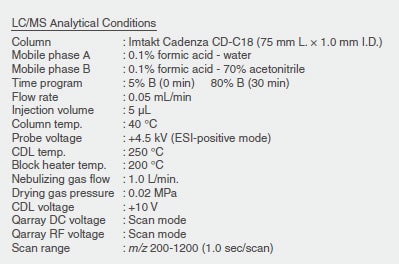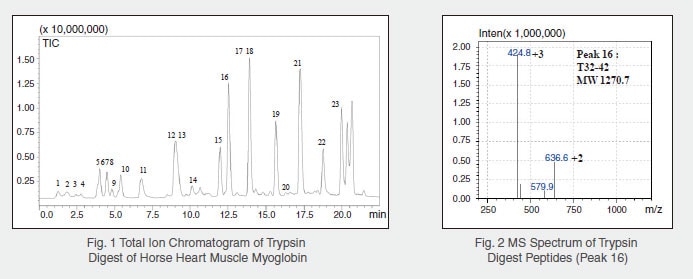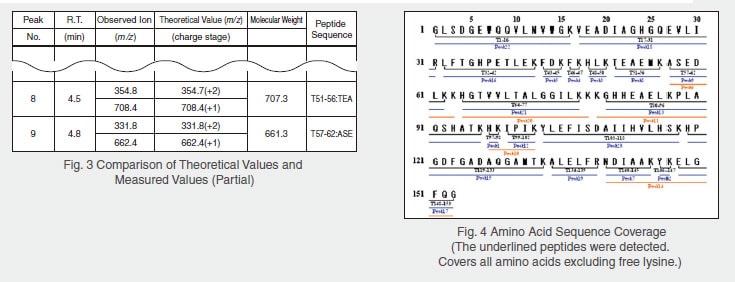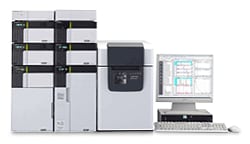Peptide Mapping
Peptide mapping involves selectively cleaving the individual target antibodies using an appropriate enzyme or chemical and analyzing the peptide fragments obtained using HPLC or another suitable method. The Guidelines require identification of the peptide fragments separated by LC across as wide a range as possible, using amino acid composition analysis, N-terminal amino acid sequence analysis, or mass spectrometry.
Peptide mapping of drug substances and products by a suitably validated analytical method is commonly conducted to confirm the structure of target antibodies according to the standard and test procedure for each lot.
As this method exploits differences in the LC retention times, reproducibility is the major point. The next page introduces the results of peptide mapping of horse heart myoglobin using a high-performance liquid chromatograph (HPLC).
Analysis of Horse Heart Muscle Myoglobin

Experiment and research flow
- Conduct enzyme digestion of the horse heart muscle myoglobin in trypsin.
- Conduct LC/MS analysis of the trypsin digest using a reverse-phase column.
Results
Fig. 1 shows the total ion chromatogram of the trypsin digest of horse heart muscle myoglobin. Fig. 2 shows the MS spectrum of Peak 16 as an example. Fig. 3 shows a partial comparison of the theoretical values and LC/MS measured values for the trypsin digest. Fig. 4 shows the recovery rates of peptides derived from horse heart muscle myoglobin obtained using this method.
All peptides (apart from lysine in the amino acid state) are identified. (The recovered peptides are underlined in the diagram.)
The peptide mapping method compares the elution times of the peptides to easily determine differences in the amino acid sequence between a standard sample and test sample. The accuracy can be further enhanced by using MS and MS/MS patterns and the Protein Sequencer System in addition to the peptide elution times to determine the sequence of the recovered peptides.


LCMS-2020 High-Performance Liquid Chromatograph Mass Spectrometer

The detection of impurities over a wide concentration range demands both high sensitivity and a wide dynamic range. The newly developed LCMS-2020 ion optical system, Qarray® Optics, achieves superior sensitivity, reproducibility, and linearity.
An extensive range of ionization methods is required to handle diverse oil-soluble and water-soluble impurities. The DUIS-2020 is one of the many LCMS-2020 ionization methods. It combines ESI and APCI to ensure that even impurities with significantly different polarities are not missed.


